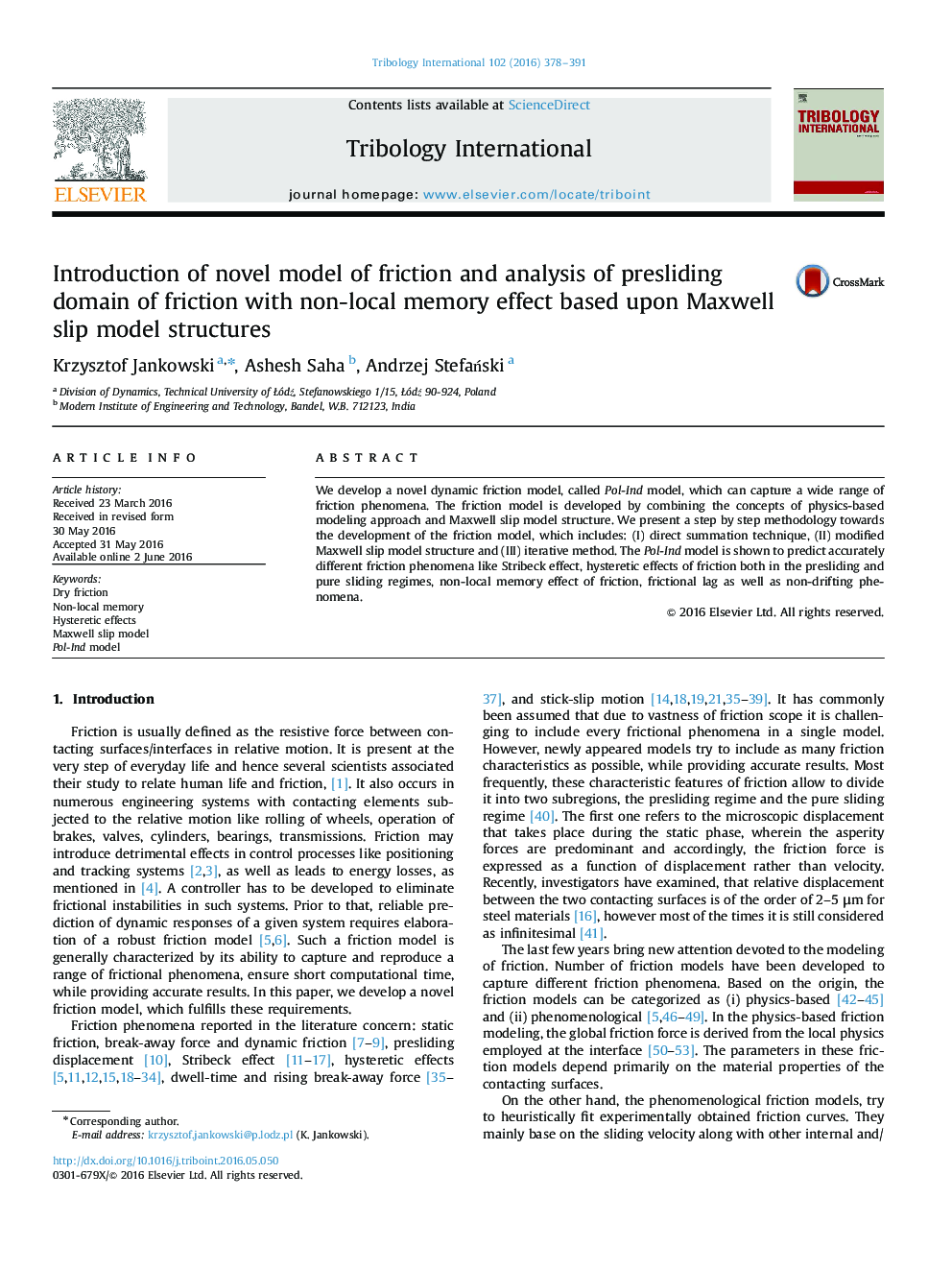| Article ID | Journal | Published Year | Pages | File Type |
|---|---|---|---|---|
| 614122 | Tribology International | 2016 | 14 Pages |
•Three approaches towards friction modeling are considered.•Step by step development of the novel dynamic friction model Pol-Ind model is shown.•Investigation of hysteretic effects of friction in the presliding regime is performed.•Comparison of the Pol-Ind model with the other approaches is presented.•Analysis of the Pol-Ind model and its assorted phenomena is propounded.
We develop a novel dynamic friction model, called Pol-Ind model, which can capture a wide range of friction phenomena. The friction model is developed by combining the concepts of physics-based modeling approach and Maxwell slip model structure. We present a step by step methodology towards the development of the friction model, which includes: (I) direct summation technique, (II) modified Maxwell slip model structure and (III) iterative method. The Pol-Ind model is shown to predict accurately different friction phenomena like Stribeck effect, hysteretic effects of friction both in the presliding and pure sliding regimes, non-local memory effect of friction, frictional lag as well as non-drifting phenomena.
